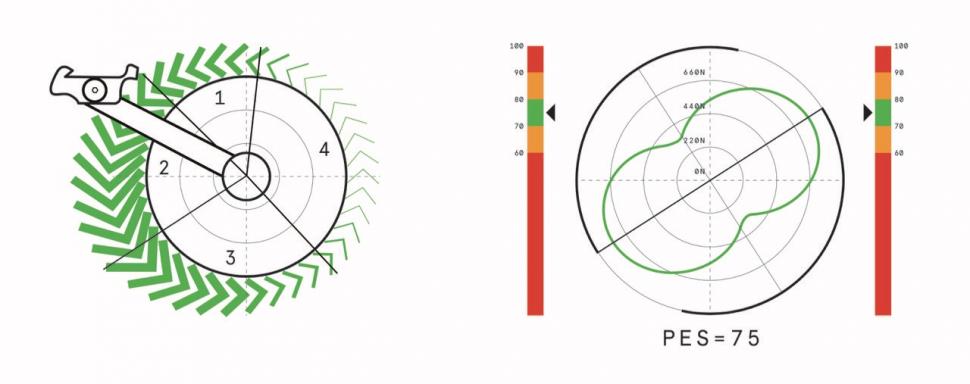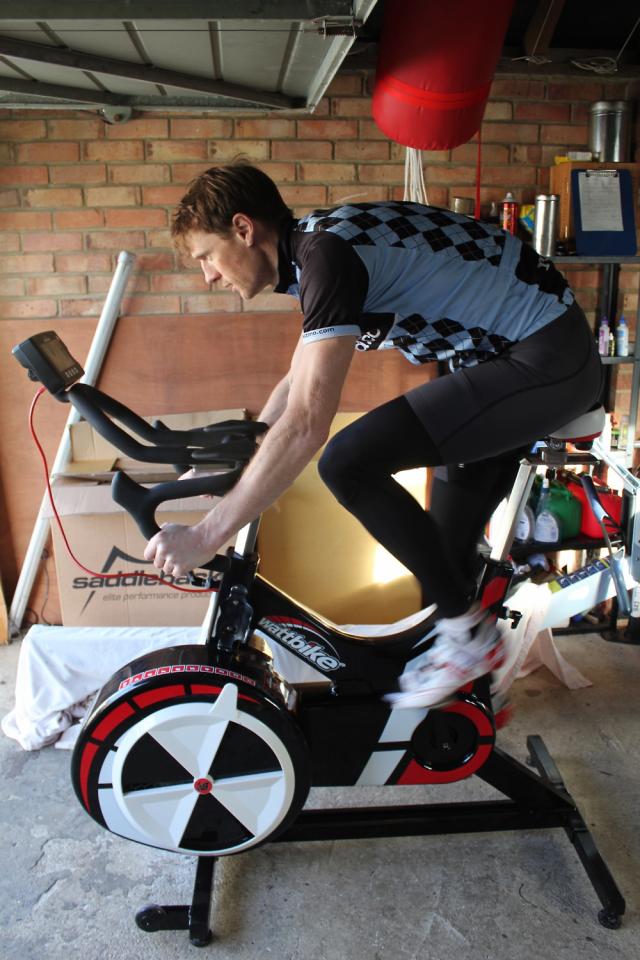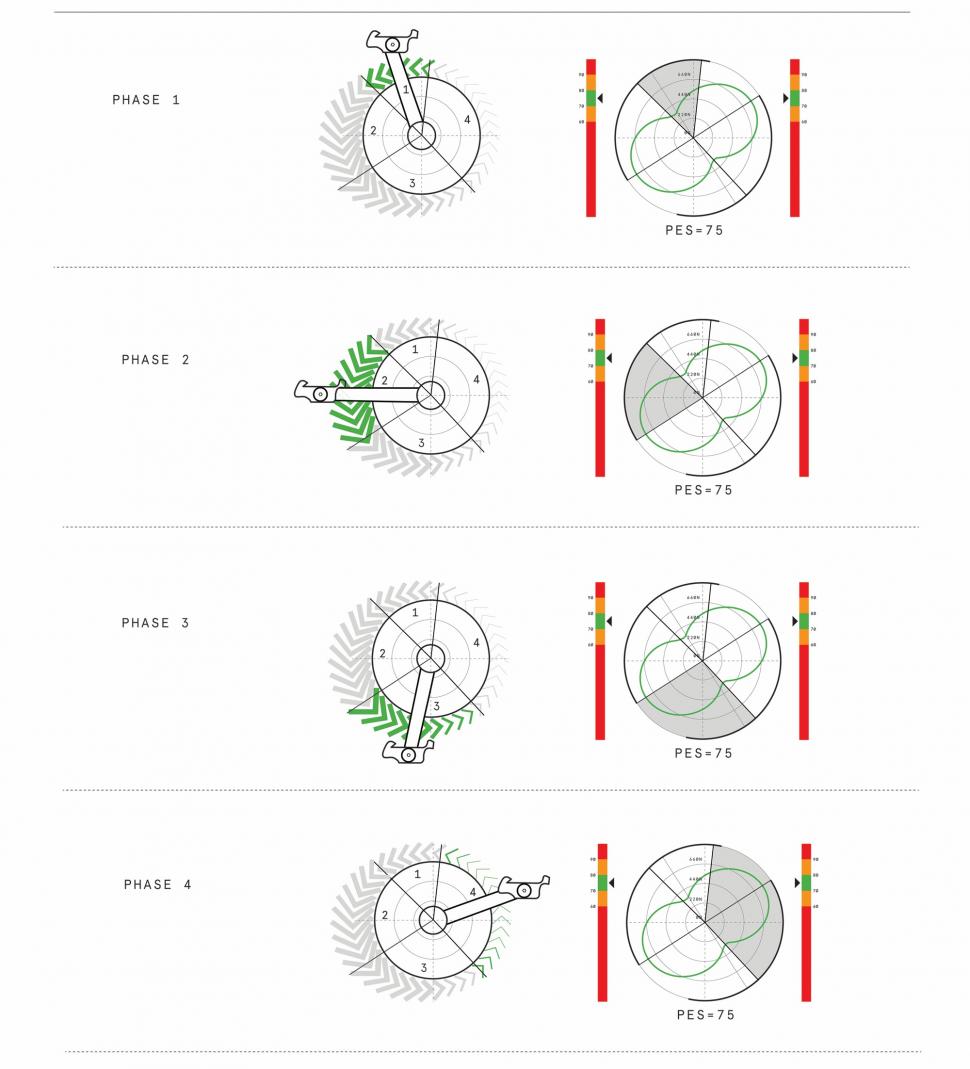- News
- Reviews
- Bikes
- Accessories
- Accessories - misc
- Computer mounts
- Bags
- Bar ends
- Bike bags & cases
- Bottle cages
- Bottles
- Cameras
- Car racks
- Child seats
- Computers
- Glasses
- GPS units
- Helmets
- Lights - front
- Lights - rear
- Lights - sets
- Locks
- Mirrors
- Mudguards
- Racks
- Pumps & CO2 inflators
- Puncture kits
- Reflectives
- Smart watches
- Stands and racks
- Trailers
- Clothing
- Components
- Bar tape & grips
- Bottom brackets
- Brake & gear cables
- Brake & STI levers
- Brake pads & spares
- Brakes
- Cassettes & freewheels
- Chains
- Chainsets & chainrings
- Derailleurs - front
- Derailleurs - rear
- Forks
- Gear levers & shifters
- Groupsets
- Handlebars & extensions
- Headsets
- Hubs
- Inner tubes
- Pedals
- Quick releases & skewers
- Saddles
- Seatposts
- Stems
- Wheels
- Tyres
- Health, fitness and nutrition
- Tools and workshop
- Miscellaneous
- Cross country mountain bikes
- Tubeless valves
- Buyers Guides
- Features
- Forum
- Recommends
- Podcast
TECH NEWS
 Pedalling Effectiveness_FINAL_Good.jpg
Pedalling Effectiveness_FINAL_Good.jpgHow to pedal perfectly, according to Wattbike
Wattbike has introduced an interesting new feature called the Pedalling Effecitveness Score that gives you a real-time visual measure of your pedal stroke, allowing you to adjust your technique as you ride.
Wattbike indoor bike trainers already have a Polar View feature that gives you a visual profile of the force you apply while pedalling. The Pedalling Effectiveness Score builds on that, the idea being that you can immediately assess the effect of changes in your pedalling technique.
Wattbike’s Pedalling Effectiveness Score is inspired by the index of force effectiveness (IFE) which is an existing way of expressing mechanical efficiency during pedalling. IFE compares the gross force – the total force applied to the pedal – and the net force – the component of force that is tangential to the chainset. In other words, it gives the proportion of force you put out that actually goes towards creating torque and turning the chainrings.
Pedalling Effectiveness Score is calculated from Wattbike’s 100Hz force data as you ride. After measuring your net force and predicting your gross force, the Pedal Effectiveness Score function displays a real-time pedal stroke graphic alongside a target score graphic, including a colour-coded breakdown for each leg. This information is intended to provide the basis for adjusting your pedal technique until you’re cycling efficiently.
Check out 15 of the best turbo trainers and rollers here.
“The metric is based on understanding the relationship between gross and net force during pedalling,” says Wattbike. "The Pedalling Effectiveness Score maps changes in pedalling efficiency to provide a highly informative and useful measure that helps drive performance. The result: you see a visual representation of how adjustments in your pedalling can change your cycling efficiency in real-time.”
“Through spending a lot of time researching and understanding pedalling effectiveness and pedalling efficiency, we were able to create the Pedalling Effectiveness Score which enables us to bring a very complex value into very meaningful day-to-day number for use in training,” says Wattbike’s Dr Barney Wainwright.
“Results include people who have changed their Functional Threshold Power by 10/20/30 watts, or riders who can now go up a series of hills that they weren’t able to before, because now they have a more effective stroke. Pedalling efficiency is a very important aspect of cycling performance, which is often overlooked, and the Pedalling Effectiveness Score maps that and tracks it.”
So what’s the secret to the perfect pedal stroke?
“To pedal optimally, a different focus is placed on each portion of the pedal stroke,” says Barney. He breaks it down into four key stages (numbered in the graphics below).
1: From the top of the pedal stroke the pedal is pushed forwards.
2: Shortly after this, a powerful downwards push starts through the middle part of the pedal stroke.
3: As the pedal approaches the bottom of the pedal stroke, the pedal is pulled backwards.
4: During the return part of the stroke there is a light upwards pull.
The “light upwards pull” is interesting in that some researchers have suggested this in the past while others have suggested simply unweighting the pedal and still others have said that pulling up on the pedals compromises the ability to maximise power at the 3 o’clock/ 9 o’clock position and have advised against it.
“When executed well, each phase merges into the next, creating a powerful and efficient pedalling style,” says Barney.

Find out how we got on when we borrowed a Wattbike for a few weeks.
How exactly do you transition from pushing forwards to driving downwards, to pulling backwards and finally to pulling upwards? We guess that’s where hiring/buying a Wattbike comes in. There’s always a catch, huh?
With the capabilities that many power meters have, you can expect more developments in pedal stroke analysis in the near future.
wattbike.com
Mat has been in cycling media since 1996, on titles including BikeRadar, Total Bike, Total Mountain Bike, What Mountain Bike and Mountain Biking UK, and he has been editor of 220 Triathlon and Cycling Plus. Mat has been road.cc technical editor for over a decade, testing bikes, fettling the latest kit, and trying out the most up-to-the-minute clothing. He has won his category in Ironman UK 70.3 and finished on the podium in both marathons he has run. Mat is a Cambridge graduate who did a post-grad in magazine journalism, and he is a winner of the Cycling Media Award for Specialist Online Writer. Now over 50, he's riding road and gravel bikes most days for fun and fitness rather than training for competitions.
Latest Comments
- OldRidgeback 1 sec ago
I've seen loads of people riding Lime bikes with flat tyres. And while I was walking the dog last night I noted one of the bikes in the e-bike...
- Bmblbzzz 2 min 41 sec ago
Yesterday (but after my previous comments, otherwise I'd have mentioned it then) I read that EBLN is the Cable's most active topic. They've had ...
- OldRidgeback 4 min 45 sec ago
Yes indeed, that's a great suggestion! But he should drill the battery holes longitudinally instead of crosswise, to maximise aerodynamic efficiency.
- tony.westclassics@live.co.uk 15 min 52 sec ago
Thats OK then, but wont be able to watch unless paying a forfune £30.99 a month, at 81 and on small pension thats un realistic
- Rendel Harris 47 min 26 sec ago
Several times recently I've come across drivers having to back out of roads and take an alternative route because either their cars wouldn't...
- mdavidford 1 hour 25 min ago
To be fair, they didn't claim that it was a picture of the Daytripper Pack - the caption clearly says it's the Seat Pack.
- RoubaixCube 5 hours 35 min ago
I dont know what Conti were thinking with that price. But I can often find GP5000's for the same price or as low as £43 for the TR versions
- NPlus1Bikelights 11 hours 5 min ago
I think buying anything off Covert Instruments would equate to going equipped over here.
- Doctor Fegg 13 hours 23 min ago
Ah, British Cycling and the UCI. It's hard to think of two more universally beloved organisations. Thames Water and the National Rifle Association...

Add new comment
13 comments
Cycling weekly did a study on this a good few years back looking at the top riders of the time. They all had different techniques. They were all champions.
Cycling weekly did a study on this a good few years back looking at the top riders of the time. They all had different techniques. They were all champions.
Cycling weekly did a study on this a good few years back looking at the top riders of the time. They all had different techniques. They were all champions.
It Wattbike are using the ratio of radial force to total force, as the article suggests, then this is fundamentally flawed. It assumes that all of the forces being applied to the cranks are being generated by the muscles. This is not the case. If you put the bike on the turbo with the resistance unit not engaged. Then place one foot on the pedal with the crank forwards at 90 degrees and the rear brakes held on locking the crank in that position. Completely relax the leg then let the brakes go. The pedal will drop because it has the weight of your leg sat on top of it. This would generate propulsive force at the cranks but your muscles don't need to do anything, gravity and the sizeable proportion of your mass that is in your leg will do the work.
Equally, if your leg is just resting on the pedal at the bottom of the stroke, the weight force of your leg will be substantial and all radial to the crank and therefore the ratio method would suggest as being inefficient, but your muscles are doing nothing.
The method is also flawed in that it examines the mechanical efficiency of the crank system but it is the mechanical efficiency of the rider that we are actually interested in. Another experiment for you to try. Put one foot on a chair so that you're hip and knee are at about 90 degrees and try to stand up onto that foot. Hopefully, you should find it quite easy. Now try the same thing with one foot on a table. You may be able to do it, but it will be much harder. In both cases you are lifting your body weight. what is different though is the position your legs are having to work in. So optimising mechanical efficiency at the cranks does not necessarily maximise the efficiency of the system driving them, ie your legs.
I really hope that Wattbike are doing a lot more than this article would suggest as all of this and more was known about when I finished my PhD on this stuff ten years ago! Then, taking these measurements was only really possible in the lab. The technology is now emerging that will make these measurements accessible to many riders. However, the challenge that remains is to interpret the numbers in a scientifically rigorous way and translate it into something that riders can make sense of and use.
Surely, it would just be cheaper to buy a fixie. Any deficits in pedalling style would pretty soon be ironed out.
For actually using this in practice try using the "Elements of Style" Sufferfest, really helped me smooth out my pedalling
I focus on phases 1 and 3. 2 just happens, and I merely try not to have any weight on the pedal for 4. I've practiced but don't really see how you can also apply a strong 2 while also maintaining a fluid cadence.
Duplicate post
Didn't Computrainer do this exact thing about a decade ago?! Did Wattbike just buy the rights to it after Racermate went bust?
Using trainer road, they describe 4 phases to pedalling.
1 push forward over the crest, down stroke, pull back and lift.
When you get the timing spot on, you can see power output increases by 3-5% for same cadence.
I tend to spin at higher rpm these days and use lift as part of unloading quads to rest them slightly. On long rides 60 miles or more I find my glutes and hamstrings ache more than quads the day after. But this technique of pedalling allows me to maintain a high cadence throughout the ride.
I have a few problems with this:
1. some of these techniques - especially pulling up - require you to be attached to your pedals. When (afaik) it has not been definitively concluded that being clipped in gives you any performance advantage.
2. I would contend that if you need to change your pedalling technique to such an extent, that the most powerful part of the stroke - the downward pressure exerted by your major muscle groups - would suffer. Or, as covered here:
3. 'Pulling up' is potentially damaging to your joints on a long-term basis. Unlike the above, I have no specific evidence for this apart from my own experience: when I've tried, I've experienced pain in my knees (parts of me that usually function well), hips and ankles (not so reliable, apart from telling me not to do things).
Though IIRC from my degree days, runners wearing weights on their ankles was discouraged due to the chance of injury.
Pulling up to me seems almost like encouraging joint dislocation or sprains. If you have exceeding stable joints, you may be able to get away with it. However, if you have unresolvable weaknesses, there's a chance of exacerbating them.
I would be interested in anything which addresses the above points, especially clinical research.
But my cranks aren't peanut shaped.
So what’s the secret to the perfect pedal stroke?
We don't really find out from the article.
You might have included a link to wattbike.com since they provided the content for the article.